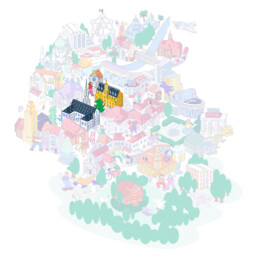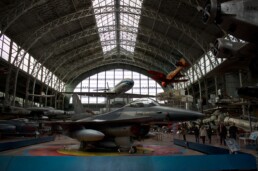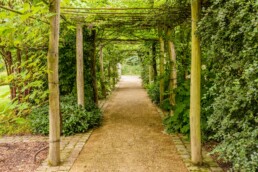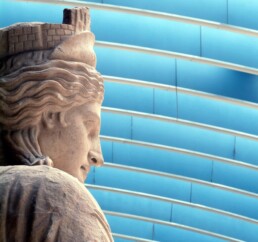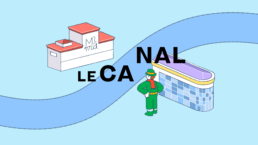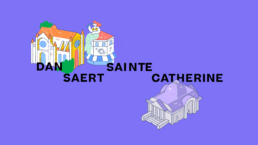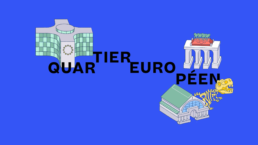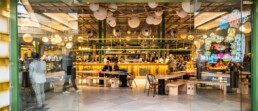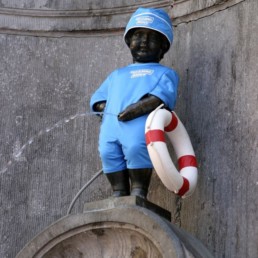War Heritage Institute (Royal Military Museum)
Here you’ll find medieval armour and souvenirs from the Napoleonic campaigns, as well as a hundred or so aircraft and armoured vehicles from the two Great Wars.
A breathtaking panoramic view awaits you at the top of the Arcade. Since May 1, 2017 the Royal Military Museum is part of the War Heritage Institute, the new reference institution for military heritage and remembrance in Belgium.
Jardin Jean Massart
Named after its founder, the Jean Massart Botanical Garden was created in 1922 by this great defender of nature and professor of botany at the ULB (Free University of Brussels). It’s located in Auderghem, a stone’s throw from Rouge-Cloître, the Sonian
Forest and the Seny, Ten Reuken and Bergoje parks. This botanical garden was designed by landscape architect Jules Buyssens. With some 2,000 plant species, it’s one of the richest botanical gardens in Belgium and a real living museum. Admire the thousands of native and exotic plants that the gardeners, researchers and students take care of every day.
The garden is an open-air laboratory for studying how plants can make cities healthier and more sustainable. It’s also a museum of ULB and is part of the science trail, together with the Museum of Zoology.
Art & History Museum (RMAH)
Embark on a fascinating journey through art and history! Come and stroll among the prehistoric flints and Egyptian mummies, walk between the ancient glasses and stand back to contemplate the impressive medieval tapestries. Immerse yourself in the oriental world as you pass Asian Buddhas and travel to the other side of the world to see a gigantic statue from Easter Island.
You still have to admire the magnificent collection of Belgian Art Nouveau… The Art & History Museum is part of the Royal Museums of Art and History (RMAH) that also cover the Musical Instruments Museum (MIM), Halle Gate and the Museums of the Far East (currently closed for renovation).
The canal, an industrial district reborn as a trendy
With its urban and contemporary art spots along the water, the canal has become a very trendy part of Brussels. Its converted industrial heritage also delights lovers of sustainability and circular economy.
Innovative and sustainable projects have taken over these listed sites: organic food shopping, art galleries, museums and temporary exhibitions; huge airy spaces, but also places for after work drinks and underground parties. This vast alternative district is definitely worth a visit.
Dansaert and Sainte-Catherine
Two neighbourhoods sit side by side in the heart of Brussels, yet they have two different atmospheres! Dansaert is the hip part of town in the city centre. Trendy and stylish with a real buzz; everyone’s talking about it.
It’s comparable to Oberkampf in Paris, Berlin’s Kreuzberg District, or Shoreditch in London. On the Sainte-Catherine side, you can sample mussels, seafood, and fish in some of the best restaurants in Brussels.
And for lovers of local Brussels cuisine, there’s Rue de Flandre. Come and explore these two neighbourhoods!
The European Quarter: Brussels’s cosmopolitan
We all know Brussels is the capital of the European Union, but did you know that the European Quarter is not just about institutions and grey offices? Throw out the clichés and head off down the beaten path to (re)discover this neighbourhood!
On the itinerary: museums worth a visit, cool spots to stop for a drink, a remarkable architectural heritage site with Art Nouveau gems, plus a host of parks and gardens where relaxation and picnics are the order of the day. Discover the European Quarter and the treasures hidden behind the institutions.
Street food in brussels
Street food has been popular years now. It used to be just a hamburger or hot dog or some chips, but nowadays there’s a whole range of balanced, exotic dishes to take away. Food trucks and salad bars have made started to pop up all over the city… but restaurants are also joining the party and offering quick and often worldly bites! Thanks to this nomadic cuisine, you can sample culinary specialities from around the world. Mexican, Indian, American, Asian… Organic, vegetarian and even vegan.
At a table or on the go? The choice is yours! Wolf Food Market In a place where primarily financial wolves used to roam, you can now devour street food to your heart’s content. Wolf, named after rue Fossé aux Loups (a former favourite watering hole among the financial wolves), is located between the Cathedral of Saints Michael and Gudula and the Monnaie. Brussels’ former General Savings and Pensions headquarters has been transformed into a veritable marketplace, where you can choose from all kinds of street food. The site is home to no fewer than nineteen restaurants and two bars.
It’s a genuine world tour of gastronomy: from hamburgers and sushi to pasta and Syrio-Lebanese sandwiches. Treat yourself to a poke bowl or one of the gourmet waffles of renowned chef Yves Matagne. If you want to stay a while longer, you can hang out in the chill room. Another must is the Food Hub, the site’s organic and zero-waste market.
Manneken Pis, one of our landmarks
Manneken Pis Dutch for ‘”Little Pissing Man”‘) is a landmark 61 cm (24 in) bronze fountain sculpture of a ‘puer mingens’ in central Brussels, depicting a naked little boy urinating into the fountain’s basin. It was designed by Jérôme Duquesnoy the Elder (1570–1641), and put in place in 1618 or 1619. The current statue is a replica which dates from 1965. The original is kept in the Brussels City Museum. Manneken Pis is the best-known symbol of the people of Brussels. It also embodies their sense of humour (called zwanze in Brussels’ dialect) and their independence of mind.
Manneken Pis is an approximate five minutes’ walk from the Grand Place (Brussels’ main square), at the junction of the Rue du Chêne/Eikstraat and the pedestrian Rue de l’Étuve/Stoofstraat. This site is served by the premetro (underground tram) station Bourse/Beurs (on lines 3 and 4), as well as the bus stops Grand Place/Grote Markt and Cesar de Paepe.
Origins of Manneken Pis
The earliest mention of the existence of Manneken Pis can be found in an administrative document, dating from 1451–52, about the water lines supplying the fountains of Brussels. From the beginning, the fountain played an essential role in the distribution of drinking water. It stood on a column and poured water into a double rectangular basin of stone. The only representations of this first statue can be found, very schematically, on a map by the cartographers Georg Braun and Frans Hogenberg, in which the fountain appeared to be installed directly on the street and not on a corner as it is today; it was depicted again in a painting from 1616 by the court painters Denis Van Alsloot and Antoon Sallaert representing Brussels’ Ommegang of 1615, as well as in a preparatory drawing to this painting, in which Manneken Pis is dressed as a shepherd.
The first statue was replaced by a new bronze version, commissioned in 1619 by Brussels’ city council. This 61-centimetre-tall (24 in) bronze statue, on the corner of the Rue de l’Étuve/Stoofstraat and the Rue des Grands Carmes/Lievevrouwbroerstraat, was conceived by Brussels’ sculptor Jérôme Duquesnoy the Elder (1570–1641), father of the architect and sculptor Jérôme Duquesnoy the Younger and the famous sculptor François Duquesnoy. It was probably cast and installed in 1620. During that time, the column supporting the statue and the double rectangular basin collecting water were completely remodelled by the stone cutter Daniel Raessens.
Manneken Pis histoire, © wikipedia https://en.wikipedia.org/wiki/

